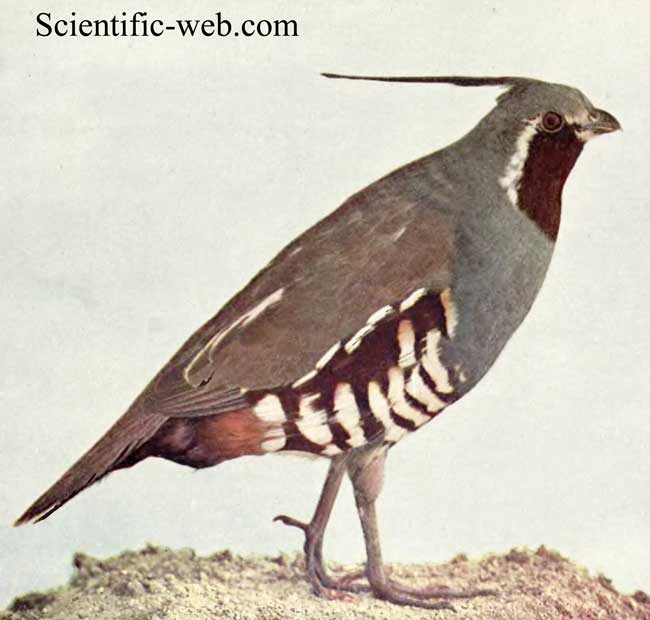Oreortyx pictus Cladus: Eukaryota Name Oreortyx pictus (Douglas, 1829) Reference Transactions of the Linnean Society of London (1) 16 p.143 Citation Vernacular names
The Mountain Quail, (Oreortyx pictus), is a small ground-dwelling bird in the New World quail family. This species is the only one in the genus Oreortyx, which is sometimes included in Callipepla. This is not appropriate, however, as the Mountain Quail's ancestors have diverged from other New World quails earlier than the bobwhites, no later than 6 mya[1]. Description
Distribution and habitat It inhabits mountainous chapparal west of the Rocky Mountains, from the United States to Baja peninsula Mexico. It has been introduced to British Columbia in Canada, and some areas of Washington state in the USA. It can be found up to 3000 m above sea level. It is a non-migratory species; however some populations may be altitudinal migrants in some mountain ranges. Behaviour Mountain Quail primarily move about by walking, and can move surprisingly fast through brush and undergrowth. In the late summer, fall and winter, the adults and immature young congregate into family groups of up to 20 birds. The birds habits can be secretive. Any flight is usually short and explosive, with many rapid wingbeats followed by a slow glide to the ground. Feeding Its diet consists primarily of plant matter and seeds. The chicks are decidedly more insectivorous than adults, gradually consuming more plant matter as they mature. Breeding Breeding among Mountain Quail is monogamous, and rarely gregarious. The female typically lays 9-10 eggs in a simple scrape concealed in vegetation, often at the base of a tree or shrub, usually close to water. Incubation lasts from 21-25 days, usually performed by the female and rarely by the male. The chicks are precocial, leaving the nest with their parents within hours of hatching. Status and conservation It is not considered threatened by the IUCN, being plentiful across a wide range. However, its success is tied to sufficient habitat, which expands in cooler and more arid climate. Subfossil remains have been found, for example at Rocky Arroyo in the Guadalupe Mountains and Shelter Cave, New Mexico, where today not enough habitat exists anymore. The bones date found from the end of the last ice age to not much more than 8000 BC[2]. Footnotes 1. ^ Zink & Blackwell (1998)
* BirdLife International (2004). Oreortyx pictus. 2006. IUCN Red List of Threatened Species. IUCN 2006. www.iucnredlist.org. Retrieved on 11 May 2006. Database entry includes justification for why this species is of least concern Source: Wikispecies: All text is available under the terms of the GNU Free Documentation License |
|

